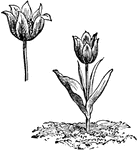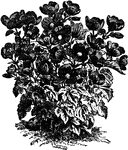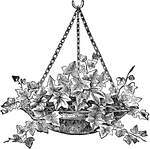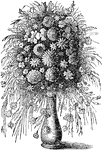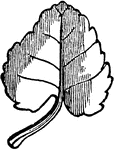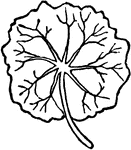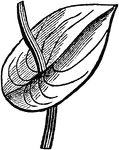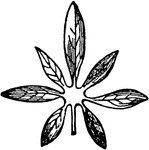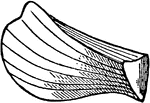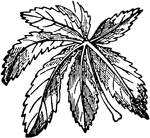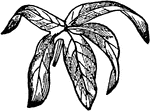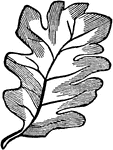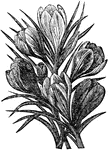
Crocuses
"The Crocus is well known as one of our earliest spring flowers, producing dense masses of richly colored…

Begnia Glaucophylla Scandens
"This is a drooping or creeping species, with light green, glossy leaves and large clusters of orange…

Cannas
"This is a genus worthy of cultivation in all collections, as its lively flowers are produced in great…

Cyclamen
"The colors white and shades of crimson. As a winter blooming plant for a conservatory or parlor window,…
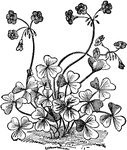
Oxalis Boweii
"The flowers are large, of a most brilliant crimson color, and produced in the greatest profusion, if…

Saxafraga Sarmentosa
"In 1870, Saxafraga sarmentosa was introduced, being beautifully and more distinctly variegated with…

Dracaena Australis
Also known as the cabbage tree. They are endemic to New Zealand and can grow up to 66 feet in height.…
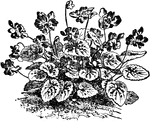
Violet, Marie Louise
"This is also a very well known flowering plant, of which there are many varieties - white, light and…
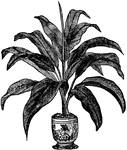
Dracaena Brasiliensis
"D. Brasiliensis is exceedingly handsome for the center of a vase or stand, forming a beautiful object,…
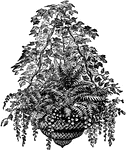
Basket of Ferns
A hanging basket filled with ferns. The handles of the basket are covered with German ivy.

Lilium Auratum
A true lily that is native to Japan. The flower color is white with gold radial markings and orange…

Lilium Brownii
"L. Brownii has been considered by some a very difficult species to grow, whereas the whole secret of…

Easter Lily
Also known as Lilium longiflorum. They are native to Japan and Taiwan, and bears a number of trumpet-shaped,…

Wallacei
"One to three feet high; flowers erect, orange yellow, spotted black, well open and very beautiful.…

Lily of the Valley
Also known as Convallaria majalis. It is native throughout the Northern Hemisphere in Asia and Europe.…
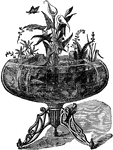
The Aquarium
"An aquarium well filled and stocked with plants, fish, etc., is one of the finest ornaments one can…

Hanging Basket with Dried Flowers
"The hanging basket is filled with dried Everlasting Flowers and Grasses, in their natural colors. Some…

Branching Root
"These roots are such as subdivide in the earth in a manner similar to the divisions of the stem, and…

Fibrous Root
"This variety consists of numerous fibers proceeding from the neck of the plant, and may be seen in…
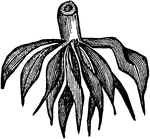
Fasciculated Root
"When the fibers of roots become enlarged by the deposition of starch, they form this variety of root."—Darby,…
Tap Root
"When the root sinks perpendicularly into the earth, and tapers regularly from the base to the apex…

Napiform Root
"The variety which is very large at the base, but tapers abruptly, as in the Turnip."—Darby, 1855
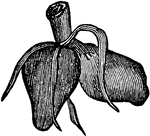
Didymous Roots
"Didymous roots are those which produce a tubercle each year, and when the tubercle of one year arrives…

Rhizoma Root
"The Rhizoma or Rootstock grows in a nearly horizontal direction, emitting roots from its under side,…
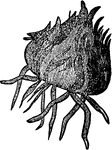
Cormus Root
"The Cormus is that variety which increases beneath the earth by development of buds in the axils of…
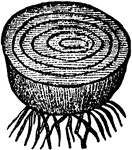
Bulb Root
"The bulb is a leaf-bud inclosed in scales or concentric layers, and is found either at the base of…

Fork-Veined Leaf
"Fork-veined leaves are those in which the primary veins divide into two nearly equal secondary veins,…

Parallel-Veined Leaves
"Parallel-veined leaves are those in which the veins proceed from their origin to their termination…
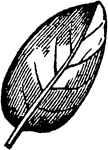
Ovate Leaf
"It is said to be ovate when it has the outline of the longitudinal section of an egg."—Darby,…
Lanceolate Leaf
"Lanceolate, when it is three or more times as long as it is broad, and rounded at the base, and tapering…

Peltate Leaf
"Peltate, with the petiole inserted in the lamina, but not in the center of it."—Darby, 1855





